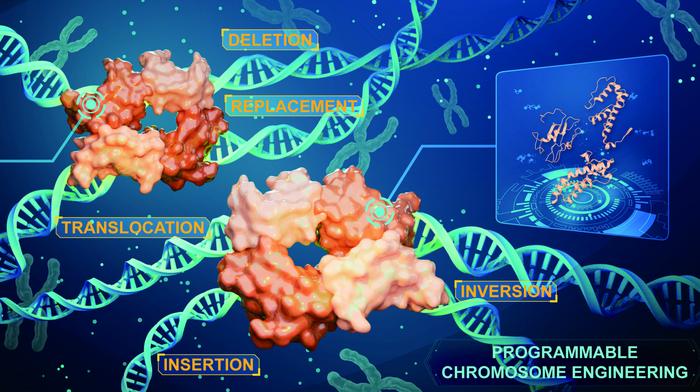A team of scientists led by Prof. GAO Caixia at the Institute of Genetics and Developmental Biology, Chinese Academy of Sciences, has developed two innovative genome editing platforms known as Programmable Chromosome Engineering (PCE) and RePCE. These technologies enable highly precise DNA manipulations at scales ranging from kilobases to megabases in plants and other eukaryotic cells.
Published online in Cell on August 4, the study overcomes longstanding challenges associated with the widely used Cre-Lox recombinase system, according to a press relerase. While Cre-Lox has great potential for precise chromosomal editing, its broader application has been limited by three key issues: reversible recombination due to symmetric Lox sites, the complex tetrameric structure of Cre recombinase that hampers engineering, and leftover Lox sites that reduce editing accuracy.
To address these challenges, the researchers introduced three major innovations:
- Asymmetric Lox sites: Through a high-throughput platform for recombination site modification, the team designed novel Lox variants that reduce unwanted reversible recombination by over 10-fold while maintaining high forward recombination efficiency.
- AiCErec: Leveraging an AI-informed protein engineering system, the team optimized the multimerization interface of Cre recombinase, creating a variant with 3.5 times greater recombination efficiency than the wild type.
- Re-pegRNA: Combining the precision of prime editing with recombinase technology, this scarless editing method uses specially designed pegRNAs to replace residual Lox sites with the original genomic sequence, ensuring seamless genome modifications.
The integration of these advances led to the creation of PCE and RePCE platforms that allow flexible programming of insertion sites and orientations. This enables precise, scarless manipulation of DNA fragments ranging from a few kilobases up to several megabases in both plant and animal cells. Achievements include targeted insertion of DNA fragments up to 18.8 kb, complete replacement of 5-kb sequences, chromosomal inversions spanning 12 megabases, deletions of 4 megabases, and even whole-chromosome translocations.
As a demonstration of the technology’s power, the team successfully engineered herbicide-resistant rice with a precise 315-kb chromosomal inversion, highlighting its transformative potential for genetic engineering and crop improvement.This pioneering work not only resolves the historical limitations of Cre-Lox technology but also opens new avenues for high-precision genome engineering across a broad range of organisms, promising significant advances in agric
